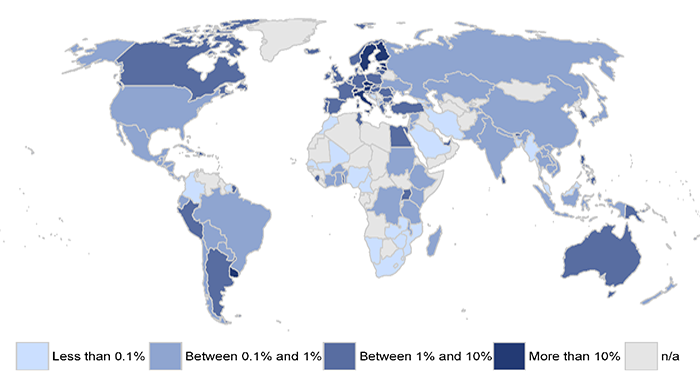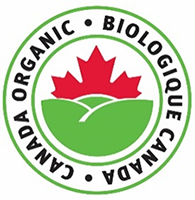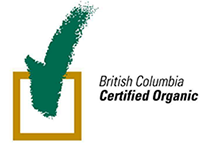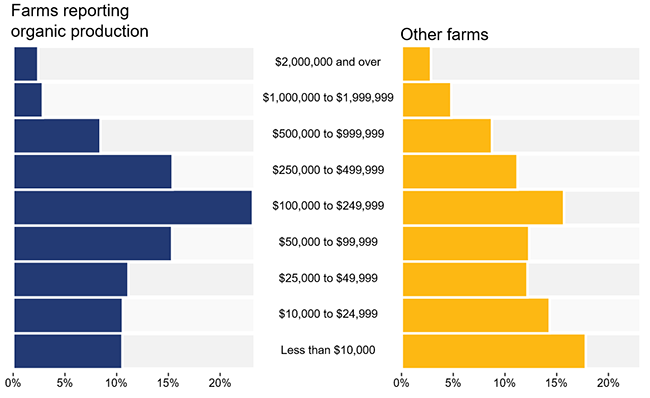In 2017, organic agriculture in Canada was a C$5.4 billion market. This model of agriculture emerged out of a collection of schools of thought and agrarian movements that opposed the industrialization of agriculture in the late 19th and early 20th centuries. In Canada, organic agriculture appeared in the 1950s, but it was not until the 1990s and 2000s that it really began to expand. There are now more than 4,000 organic farms across the country, concentrated mainly in Quebec, British Columbia and Saskatchewan. Since 1999, the production and sale of organic commodities have been governed by the Canadian Organic Standards, which have been legally binding since the Organic Products Regulations came into force in 2009. This regulatory framework governs such matters as production techniques, organic farm management principles, labelling and the importation of organic products. It informs consumers about how the food they eat is produced, although there is still no scientific consensus on the benefits of organic products over food produced using conventional agriculture in terms of the environment, health and farmers' incomes.
Organic agriculture is a set of agricultural production techniques that ban the use of pesticides, synthetic fertilizers and biotechnology. It is based on alternative processes for fertilization and protection from disease. Organic agriculture has been practised in Canada since the 1950s, with the number of organic farms rapidly growing since the 1990s. The sale of organic products has also increased over the past two decades, representing a market of C$5.4 billion in 2017.1 This background paper presents the historical background of organic agriculture and an overview of its importance in the Canadian agricultural system. It also examines federal regulations and discusses some contemporary issues related to this system of production.
The origins of organic agriculture lie in several agrarian, social and spiritual movements that emerged in Europe and North America at the beginning of the 20th century in opposition to the mechanization of agriculture and the large-scale use of mineral fertilizers. These movements would later converge toward the development of modern organic agriculture.
According to Helga Willer and Julia Lernoud of the Research Institute of Organic Agriculture (FiBL), the concept of “natural agriculture” appeared at the end of the 19th century in Germany and Switzerland. This model calls for a return to the land, limited use of machinery and permanent soil cover. Given their vegetarian convictions, proponents of natural agriculture also limited the use of animals on the farm, especially draft animals. Meanwhile, in 1924, Austrian Rudolf Steiner developed biodynamic agriculture, which also shunned the use of machinery and mineral fertilizers, and was based on esoteric principles such as following lunar cycles in crops.2 In the United Kingdom, the Soil Association was founded in 1946 and was one of the first organizations promoting soil conservation with practices such as zero tillage, permanent ground cover and crop rotation. In the United States, significant soil erosion in the Prairies in the 1930s, caused in part by intensive tillage, led to the emergence of similar organizations such as Friends of the Land that promoted alternatives to tillage, such as the use of compost on crops.
Until the 1970s, these different schools of thought operated independently for the most part, and the use and definition of the concept of organic agriculture varied from one organization to another. At the initiative of associations representing these different schools of thought, the International Federation of Organic Agriculture Movements (IFOAM) was created in 1972 to consolidate the organic movement. Today, IFOAM has more than 750 member organizations, including producer, processor and consumer associations, research institutes and private companies in more than 100 countries.3
In Canada, the history of organic agriculture reflects these international developments. Founded in 1953, the Canadian Organic Soil Association promoted soil conservation and biodynamic practices across the country in the 1960s. In the 1970s, McGill University developed the “Ecological Agriculture Projects” program, which became a key centre for information for those working in the area. The first certification bodies appeared in the 1980s.4 This institutionalization was completed with the introduction of the first Canadian organic standard in 1999, followed, in 2009, by regulations making compliance with standards mandatory for products for sale. The organic standards and the regulations governing them are presented in detail in section 4 of this paper.
Despite the multiple origins and different currents of thought behind the development of organic agriculture, common definitions have gradually emerged. First, the Codex Alimentarius Commission's Committee on Food Labelling – an organization responsible for developing international food standards under the Food and Agriculture Organization (FAO) of the United Nations and the World Health Organization (WHO) – established an international standard on organic agriculture in 1999. This standard, which reflects an international consensus among several governments, provides a description of organic agriculture on which many pieces of legislation are based:
[Organic products] come from an organic farm system employing management practices which seek to nurture ecosystems which achieve sustainable productivity, and provide weed, pest and disease control through a diverse mix of mutually dependent life forms, recycling plant and animal residues, crop selection and rotation, water management, tillage and cultivation.5
At the same time, IFOAM established four fundamental principles of organic agriculture: the principles of health, ecology, fairness and care.6 In 2008, IFOAM developed a formal definition illustrating these four fundamental principles:
Organic agriculture is a production system that sustains the health of soils, ecosystems and people. It relies on ecological processes, biodiversity and cycles adapted to local conditions, rather than the use of inputs with adverse effects. Organic agriculture combines tradition, innovation and science to benefit the shared environment and promote fair relationships and a good quality of life for all involved.7
IFOAM's definition includes the goals of social justice, fairness and the preservation of traditions, goals that are absent from the Codex Alimentarius Commission's definition. These notions refer to the organization's positions in support of the preservation of genetic resources, traditional knowledge and poverty reduction.
In Canada, the organic standard provides a definition that includes both environmental and social aspects, but stipulates that the environment is the primary concern of organic agriculture:
Organic production is a holistic system designed to optimize the productivity and fitness of diverse communities within the agro‑ecosystem, including soil organisms, plants, livestock and people. The principal goal of organic production is to develop operations that are sustainable and harmonious with the environment.8
According to Statistics Canada, there has been an overall increase in the number of farms reporting organic production9 over the past 15 years. There were 4,289 organic farms in Canada in 2016, up from 2,230 in 2001. This increase was observed while the total number of farms declined over the same period. Although farms reporting organic production make up a growing share of Canadian farms, they remain marginal, accounting for only 2.2% of the 193,492 farms in Canada in 2016.
Data from the Canada Organic Trade Association show that the number of organic processors has grown in tandem with organic farms over the same period (Figure 1).
Figure 1 – Number of Organic Farms and Processors in Canada

Note: The Research Institute of Organic Agriculture (FiBL) defines “organic producers” as follows: “Production unit operated under a single management for the purpose of producing agricultural product.”
Sources: Figure prepared by the author using data obtained from FiBL Statistics, Organic operators. For the definition of “organic producer,” see FiBL Statistics, Information on data and terms of use.
While the census counts farms reporting organic production in all provinces as well as Yukon, there are significant regional variations. For example, in 2016, 62% of all organic farms were in three provinces: Quebec, Saskatchewan and British Columbia. The percentage of organic farms also varies by province. In 2016, they accounted for 4.4% of farms in Quebec and 3.1% of farms in British Columbia, but were less well represented elsewhere (Table 1). Some provinces have regulations, legislation or programs supporting organic production that may account for some of these regional variations.10
| Province/Territorya | Number of Organic Farms in 2016 | Percentage of Total Farms | Change in Numberb 2011–2016 |
|---|---|---|---|
| Quebec | 1,268 | 4.4% | ↗ 231 |
| Saskatchewan | 879 | 2.5% | ↘ 185 |
| Ontario | 854 | 1.7% | ↗ 80 |
| British Columbia | 550 | 3.1% | ↘ 19 |
| Alberta | 424 | 1.0% | ↗ 98 |
| Manitoba | 161 | 1.1% | ↘ 19 |
| Nova Scotia | 60 | 1.7% | → 0 |
| New Brunswick | 49 | 2.2% | ↘ 10 |
| Prince Edward Island | 39 | 2.9% | ↘ 7 |
| Yukon | 8 | 5.6% | → 0 |
| Newfoundland and Labrador | 5 | 1.2% | → 0 |
Notes:
Sources: Table prepared by the author using data obtained from Statistics Canada, Table 32-10-0414-01: Organic products for sale; and Statistics Canada, Table 32-10-0440-01: Total number of farms and farm operators.
The profile of organic farms contrasts slightly with that of conventional farms. Compared to other farms, there were proportionately fewer organic farms run exclusively by men and more organic farms run by both men and women in 2016 (Figure 2). In addition, there were proportionately fewer organic farms run exclusively by operators more than 55 years of age than other farms (Figure 3). These differences could be explained by the relative newness of organic agriculture in Canada, and by the high conversion costs for those who have already established a conventional farming operation. An IFOAM report highlights how empowering organic agriculture is for women, which may account for their relatively greater involvement in this kind of farming in Canada.11
Figure 2 – Distribution of Organic Farms and Other Farms in Canada by Operator Gender (2016)

Source: Figure prepared by the author using data obtained from Statistics Canada, 2016 Census of Agriculture (data obtained directly from Statistics Canada).
Figure 3 – Distribution of Organic Farms and Other Farms in Canada by Age Class of Operator (2016)

Source: Figure prepared by the author using data obtained from Statistics Canada, 2016 Census of Agriculture (data obtained directly from Statistics Canada).
According to the IFOAM/Research Institute of Organic Agriculture (FiBL) 2020 annual report on organic agriculture, in 2018, Canada ranked 11th in the world in terms of organic acreage, behind countries such as Germany and France, but ahead of Brazil, Russia and Mexico.12 Australia and Argentina led the way, largely due to their extensive livestock acreage. Canada ranked at the bottom of the Organisation for Economic Co-operation and Development countries in terms of the percentage of its total farmland used for organic agriculture, with only 2% of its land used for this type of agriculture, compared to 24.6% for Austria and 19.8% for Sweden (Figure 4). However, Canada does rank among the countries with the highest percentage of land used for organic cereals and pulses.13
Figure 4 – Percentage of Total Farmland Used for Organic Agriculture (2017)

Sources: Map prepared by the author using data obtained from Natural Earth, 1:110m Cultural Vectors 1:110m Physical Vectors version 4.1.0; and FiBL Statistics, Data on organic area in worldwide.
Canada was the sixth largest importer and seventh largest exporter of organic commodities in 2018, with C$700 million in imports and C$666 million in exports. The United States and Italy were the top two exporters of organic commodities, each with more than C$3 billion in sales that year.14
Canada's organic exports saw strong growth (256%) between 2008 and 2012. This coincided with the introduction of binding federal regulations in 2009 and the conclusion of an equivalency agreement with the United States for organic commodities. According to some authors, one of the main objectives of the 2009 regulations was to bring Canada's regulations in line with those of its major trading partners.15
Prior to 1999, there was little federal regulation of organic agriculture and the rules relied on certification bodies and regulations in place in some provinces. In 1993, British Columbia introduced an organic certification scheme centred around the use of the “British Columbia Certified Organic” logo. The certification process was governed by the Organic Agricultural Products Certification Regulation, which included fines for fraudulent use of the logo. Quebec took a separate approach in the 2000s by regulating the use of the term “organic,” which then became a “reserved designation” under the 1996 Act respecting reserved designations. At that time, Quebec also developed its own standard, the Normes biologiques de référence.16
In 1999, the Canadian General Standards Board established a Canadian national standard on organic agriculture – Organic Production Systems: General Principles and Management Standards 17 – which sets out in detail the specifications that organic producers must follow. However, prior to 2009, this standard was not legally binding, although it was applied by many certification bodies, and organic claims were not required to meet this standard at the federal level. The Canadian organic regime was subsequently supplemented by two other standards: the first, adopted in 2006, on permitted substances lists,18 and the second, adopted in 2012, on aquaculture.19 Together, these three instruments make up the Canadian Organic Standards.
The Canadian Organic Standards explicitly prohibit certain agricultural practices, such as the use of genetic engineering techniques, growth regulators and irradiation. Fertilizers, composts and food additives are allowed only if they contain permitted substances listed in the standards. While the use of drugs in animals is allowed, its use must be therapeutically necessary and not for preventive or growth-enhancing purposes. Similarly, the use of antibiotics is only permitted in emergencies and must be time-limited.
Steps must be taken to avoid crop contamination by unauthorized products or seeds derived through biotechnology, by establishing buffer zones between organic and non-organic crop growing areas. While organic and conventional plots may co-exist on the same farm operation, the Canadian Organic Standards specify that the farm must “aim at a complete transition of its production.” A farm continuing to have non-organic production must ensure that there can be no possible confusion between its organic and non-organic shares of production. For example, the same species cannot be grown organically and non-organically, and organic crops must be stored separately from crops grown under other farming practices.20
In 2009, the Organic Products Regulations, under the Canada Agricultural Products Act,21 made the Canadian Organic Standards legally binding. These regulations govern accreditation of the certification bodies responsible for enforcing the standards and provide the terms and conditions under which these bodies may be suspended if they violate the rules. The regulations set out the rules for granting or withdrawing certification and stipulate that certification bodies must also comply with the provisions of two International Organization for Standardization (ISO) standards on certification mechanisms.22 Canada's regulatory regime – based on standards established and maintained by external bodies – differs from most other regulatory systems in the world, such as the one in the United States, where production rules are set directly by the U.S. Department of Agriculture.23 In 2018, the provisions of the Organic Products Regulations were incorporated into the Safe Food for Canadians Regulations.24
The regulations also govern organic product labelling and interprovincial and international trade in organic products. In particular, they restrict the use of terms such as “organically produced,” “organically grown” and “organic” to certified organic products or multi-ingredient products that contain at least 95% certified organic products. Multi-ingredient products that contain less than 95% organic products may be labelled with the expression “organic ingredients” if it is immediately preceded by the percentage of its contents that are organic products; they may also note which products are organic in the list of ingredients. Packaging must also indicate which Canadian certification body certified the product as organic.
Federal regulations apply to products intended for interprovincial or export trade, as well as to products bearing the “Canada Organic” logo. They do not apply to food produced and sold in the same province or territory.25 Some provinces (British Columbia, Manitoba, Quebec, New Brunswick and Nova Scotia) have addressed this gap by introducing their own regulations covering the sale of organic products within their jurisdiction.26 In addition, British Columbia and Quebec have also created organic certification logos specific to their provinces (Figure 5).
| “Canada Organic” Logo | “British Columbia Certified Organic” Logo | “BIO Québec” Logo |
|---|---|---|
 |
 |
 |
Sources: Sources: Government of Canada, “Use of the organic logo on organic products,” Organic claims on food labels; Certified Organic Associations of British Columbia, British Columbia Certified Organic Program: Symbol User's Guide, August 2012; and Conseil des appellations réservées et des termes valorisants, Guide d'utilisation: Logo BIO Québec ![]() (139 KB, 3 pages) [Available in French only].
(139 KB, 3 pages) [Available in French only].
The importation of organic products into Canada is also covered by federal regulations. The Canadian Food Inspection Agency (CFIA) has entered into agreements with foreign countries to recognize the equivalency of their organic regulatory schemes. However, these agreements do not apply to aquaculture products. Since 2009, Canada has entered into such agreements with four countries and with the European Union:
Products from countries with which Canada does not have an agreement may be imported as organic if they have been certified by one of the foreign certification bodies accredited by the CFIA.27 As of December 2019, 85 countries and territories had at least one such body. These certification bodies apply the Canadian scheme's rules, not the rules of the country or territory where they are located, and may authorize the use of the “Canada Organic” logo. Regardless of how they are certified, imported products must also indicate the name of the entity responsible for certification and the country of origin on their packaging.
Several studies have attempted to assess the environmental impact of organic agriculture, although with sometimes contradictory findings. Recent meta-analyses indicate that soil conservation practices implemented under organic agriculture can benefit biodiversity. For example, the limited use of certain pesticides appears to promote a significant increase in soil microbial activity that contributes to the preservation of soil structure and fertility.28 Similarly, the limited use of mineral fertilizers in this type of agriculture also appears to reduce the leaching of nitrates responsible for the eutrophication of rivers and lakes.29 However, another meta-analysis from 2017 suggests that if river and lake eutrophication metrics are related to the amount of food produced rather than the area of land under cultivation, organic agriculture has a greater impact than does conventional agriculture because of this production system's dependence on liquid manure to fertilize crops.30
Productivity studies show that organic agriculture yields are 8% to 25% lower than those of conventional agriculture, depending on the type of production.31 Organic agriculture therefore requires larger areas to produce the same amount of food, which has led some authors to conclude that widespread organic agriculture could result in an increase in the amount of farmland, thereby increasing its environmental footprint.32 Similarly, the ban on the use of chemical herbicides may force organic producers to till the soil more in order to eliminate weeds, which may ultimately lead to soil erosion.33 However, these negative impacts may be mitigated in the future with improved organic farming techniques, including the development of plant species better adapted to organic production systems.34
In Canada, organic farms are concentrated in certain commodity sectors (Figure 6). These are some of the sectors with the least significant differences in yields between organic and conventional agriculture. For example, there are proportionately more organic farms in a sector such as greenhouse production, where organic greenhouse vegetable yields are similar to those for conventional greenhouse vegetables.35 In contrast, there are proportionately fewer organic farms in the cereal sector, where yield differences are more pronounced, with organic production generally yielding less than conventional production in this sector.36
Figure 6 – Percentage of Organic Farms by Type of Agricultural Production, Relative to the Average Percentage of Organic Farms in Canada (2016)

Source: Figure prepared by the author using data obtained from Statistics Canada, 2016 Census of Agriculture (data obtained directly from Statistics Canada).
The human health benefits of organic products are still poorly known. A lower prevalence of allergies and certain cardiovascular diseases has been observed in individuals who consume organic products, but this could be attributable to the healthier lifestyles observed among those who consume organic products compared to those who do not. Similarly, tests conducted on animals have shown positive effects of organic food on their immune capacity, but it has not been shown that these results can be generalized to humans. By limiting the use of synthetic pesticides, organic agriculture could limit consumer exposure to pesticide residues, but the health impact of this is poorly documented. As well, restrictions on the use of antibiotics in organic agriculture could help limit the phenomenon of antimicrobial resistance, which is fostered by the frequent use of antibiotics.37
Certified organic products are generally sold at higher prices than conventional agriculture products, which can compensate for the lower yields of organic agriculture and make it profitable.38 In order to benefit from these premiums, farmers must have their production certified, which implies a transition period during which the farmer has to implement organic practices for several years without being able to charge higher prices. Moreover, since organic agriculture is more labour intensive, access to labour can pose a challenge.39
In Canada, it is difficult to measure the impact of organic agriculture on farmers' incomes. In 2016, more than half (53.9%) of organic farms reported gross annual revenues between $50,000 and $500,000. Conventional farms are relatively more represented than organic farms in the lowest revenue brackets (less than $50,000), but also in the highest (more than $500,000) (Figure 7). Note that these data do not provide information about the causes of these differences in revenues; they only show that there is an observable difference. For instance, it is not possible with this preliminary analysis to determine whether these differences are the result of conversion to organic agriculture.
Figure 7 – Share of Organic and Other Farms in Canada in Each Income Bracket (2016)

Source: Figure prepared by the author using data obtained from Statistics Canada, 2016 Census of Agriculture (data obtained directly from Statistics Canada).
Organic agriculture in Canada is still relatively new, but it accounts for a growing share of agriculture. Its expansion is contingent on the development of Canadian organic standards and regulations that ensure a consistent certification scheme and reliable organic labelling for consumers. Updates to the Canadian Organic Standards, which are conducted every five years, are important for maintaining consistency and consumer confidence in organic labelling. In order to continue to grow, the sector will need to demonstrate its effectiveness in achieving its environmental and societal objectives in light of evolving knowledge and technological innovations, but also reduce differences in yield and price with conventional agriculture.
† Library of Parliament Background Papers provide in-depth studies of policy issues. They feature historical background, current information and references, and many anticipate the emergence of the issues they examine. They are prepared by the Parliamentary Information and Research Service, which carries out research for and provides information and analysis to parliamentarians and Senate and House of Commons committees and parliamentary associations in an objective, impartial manner. [ Return to text ]
© Library of Parliament